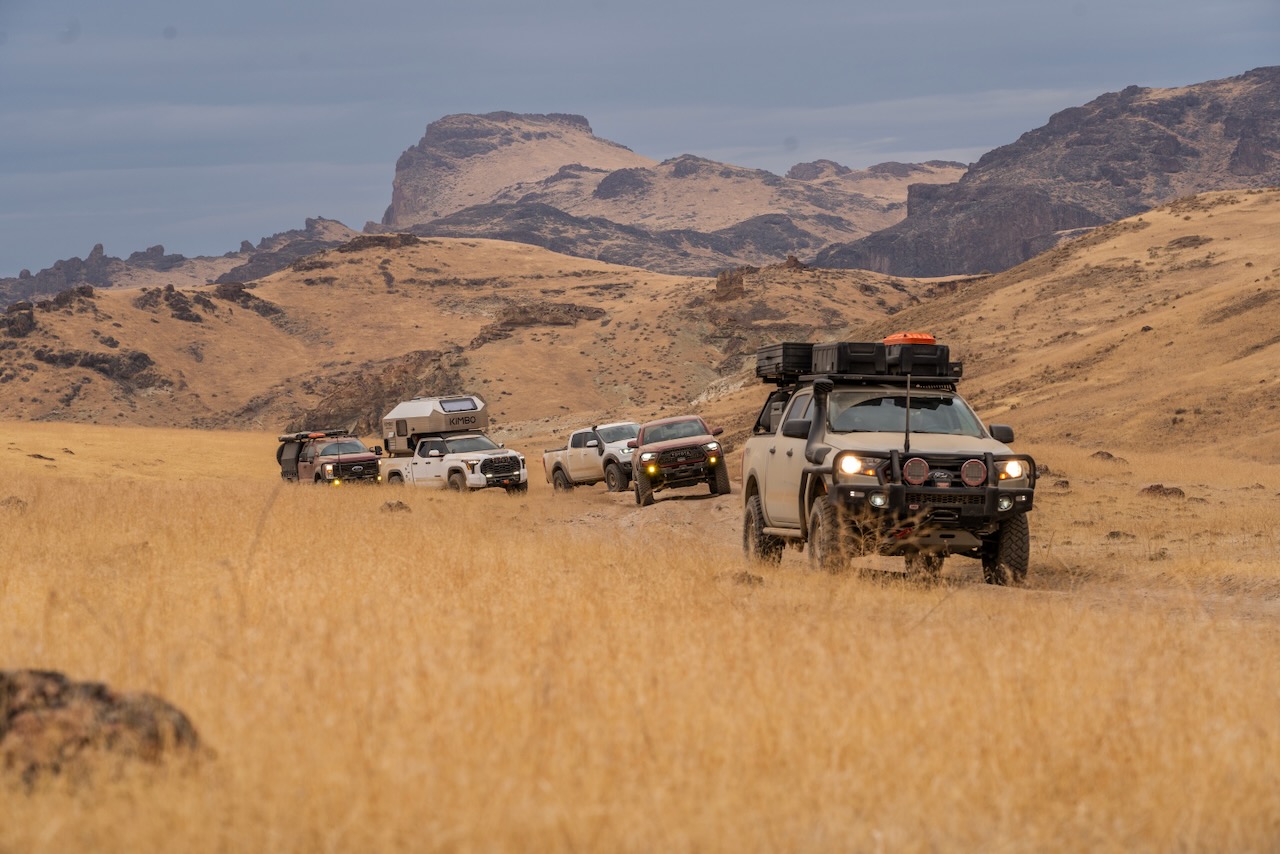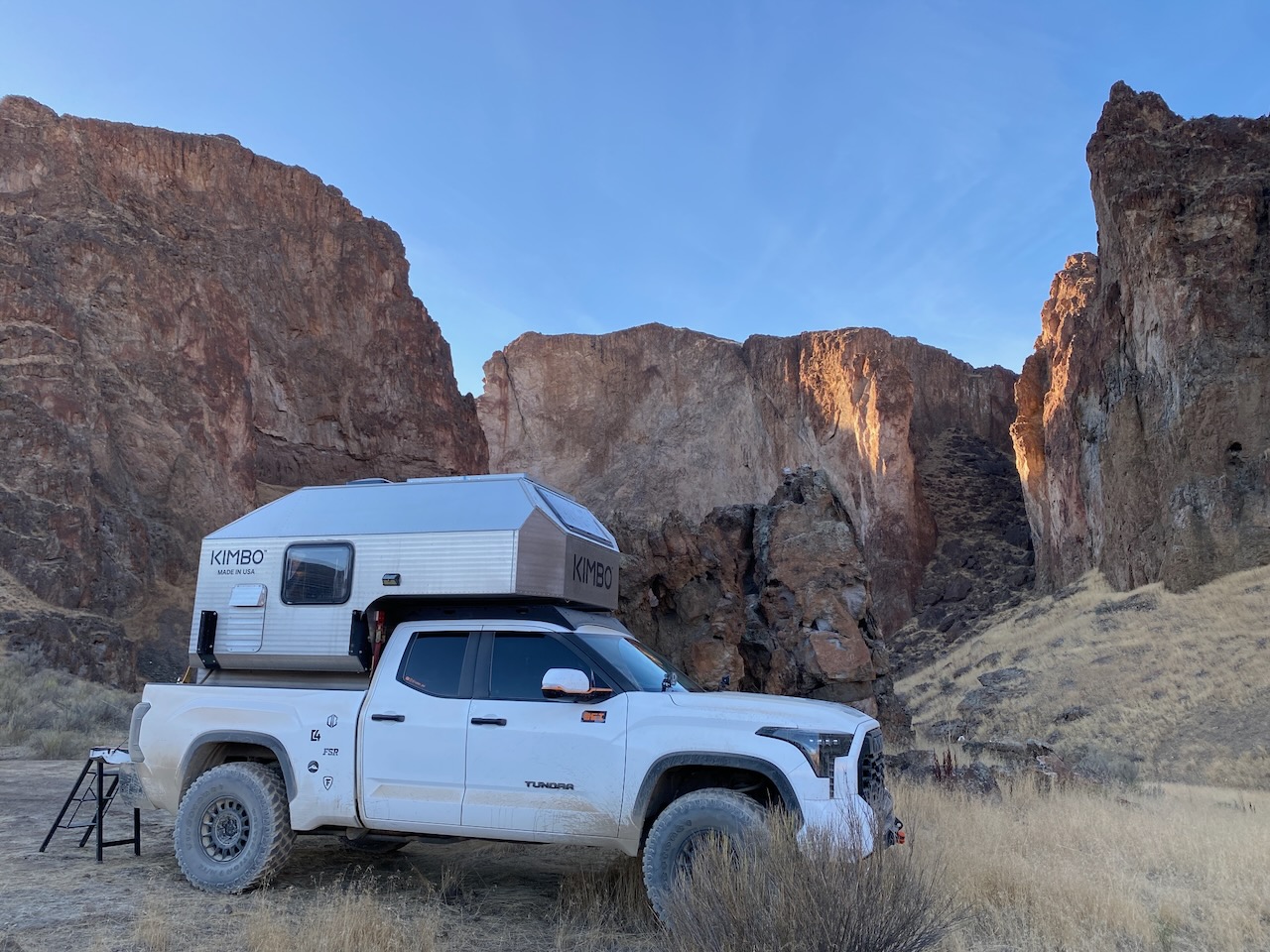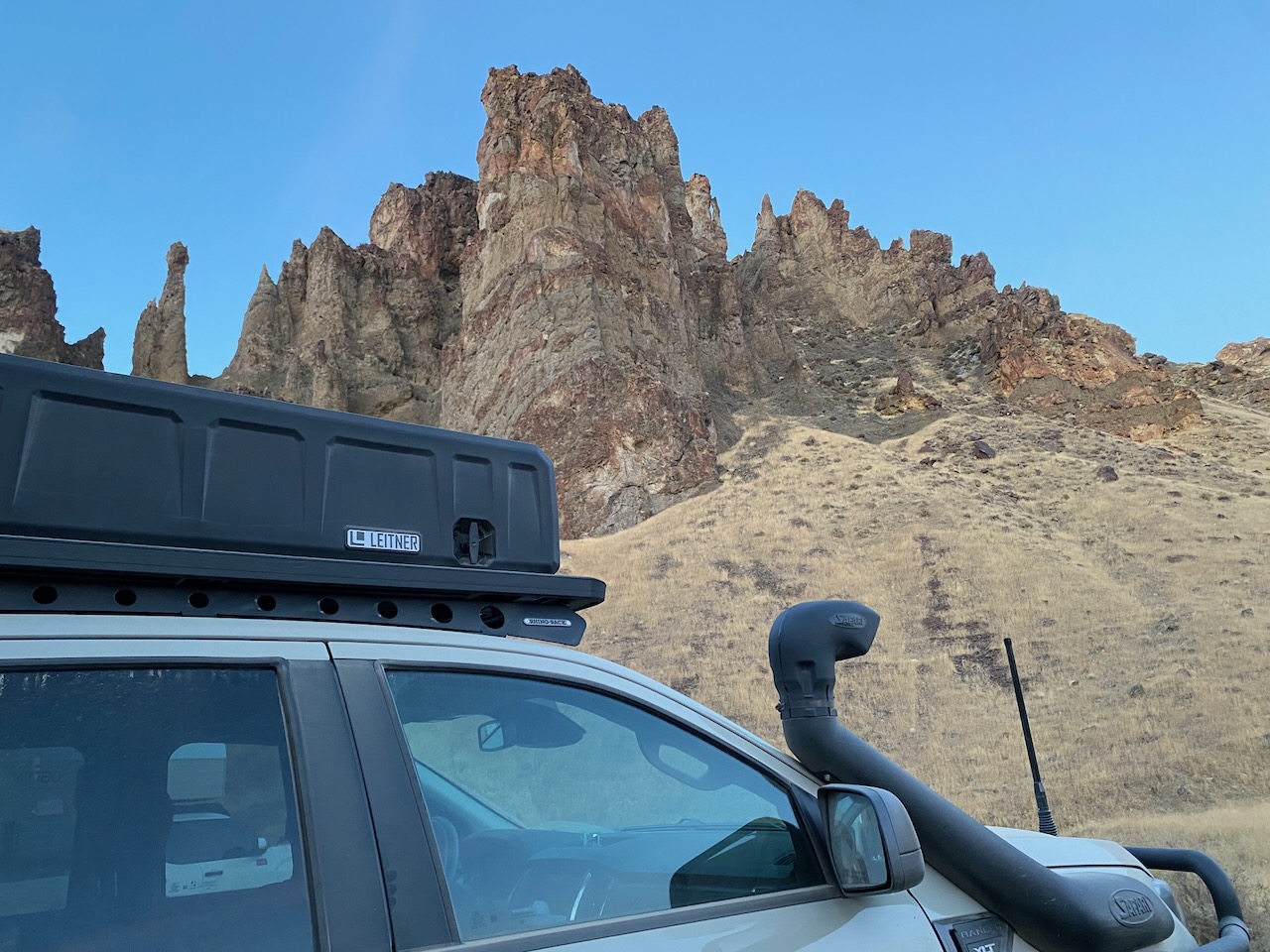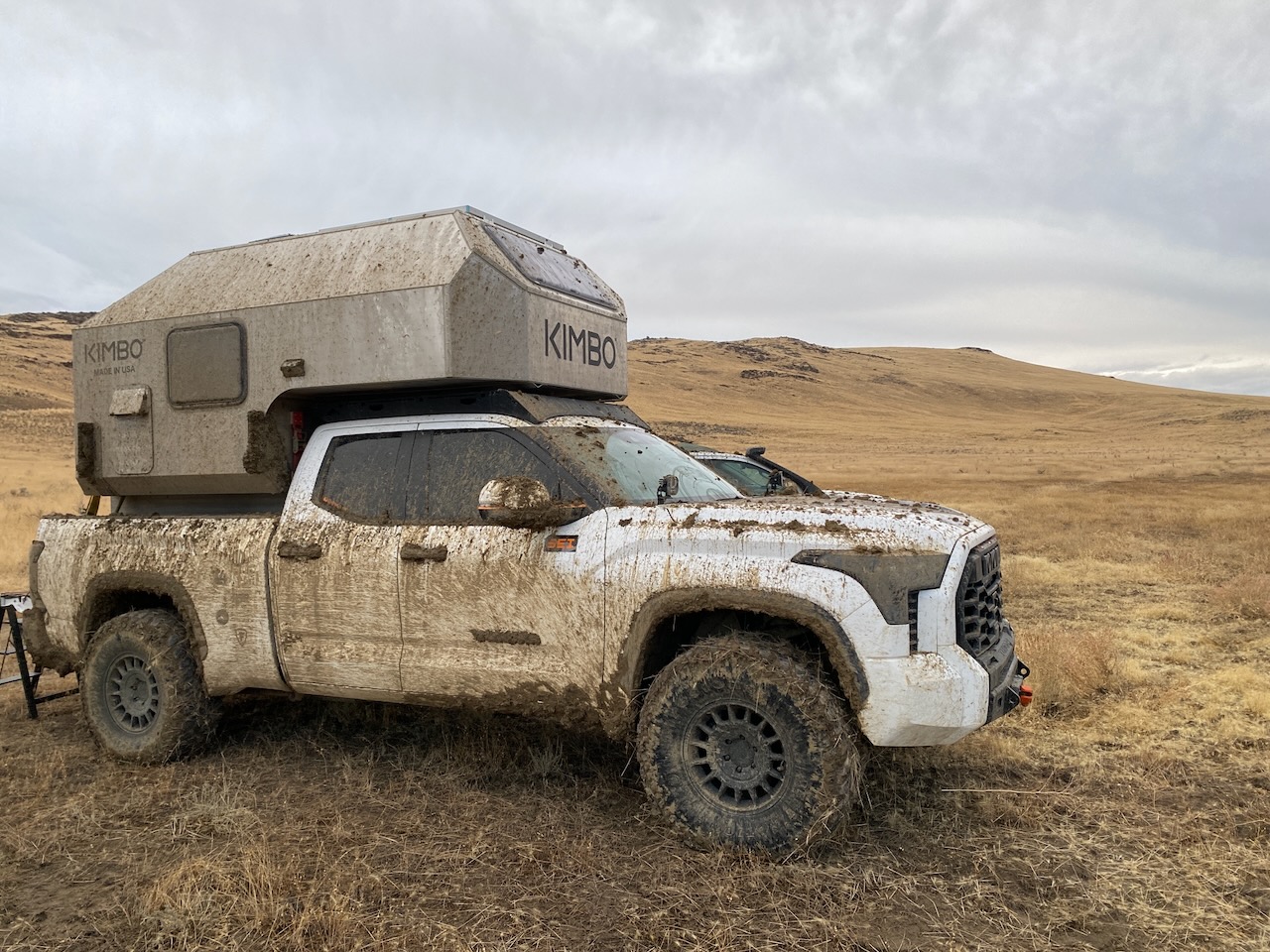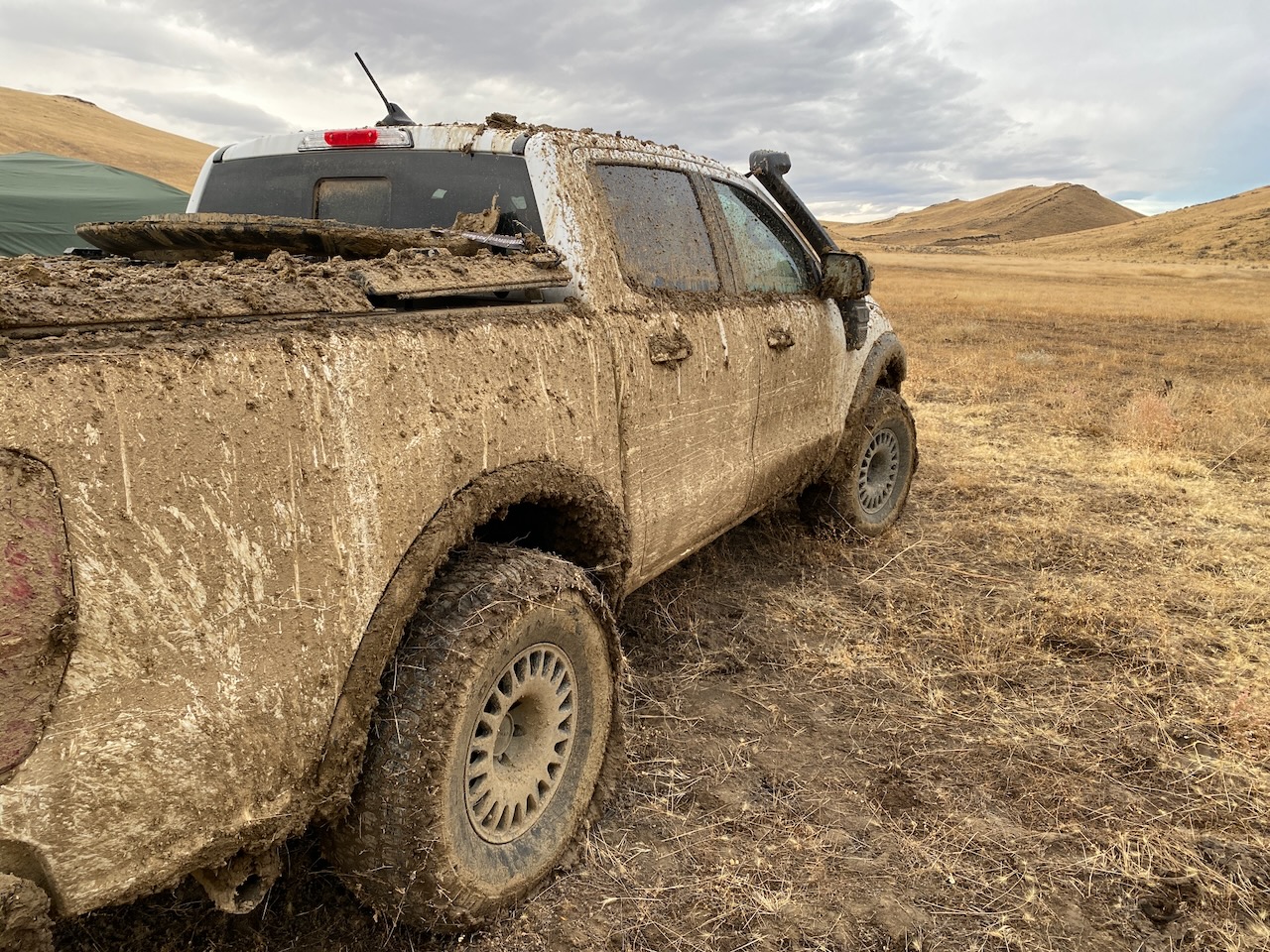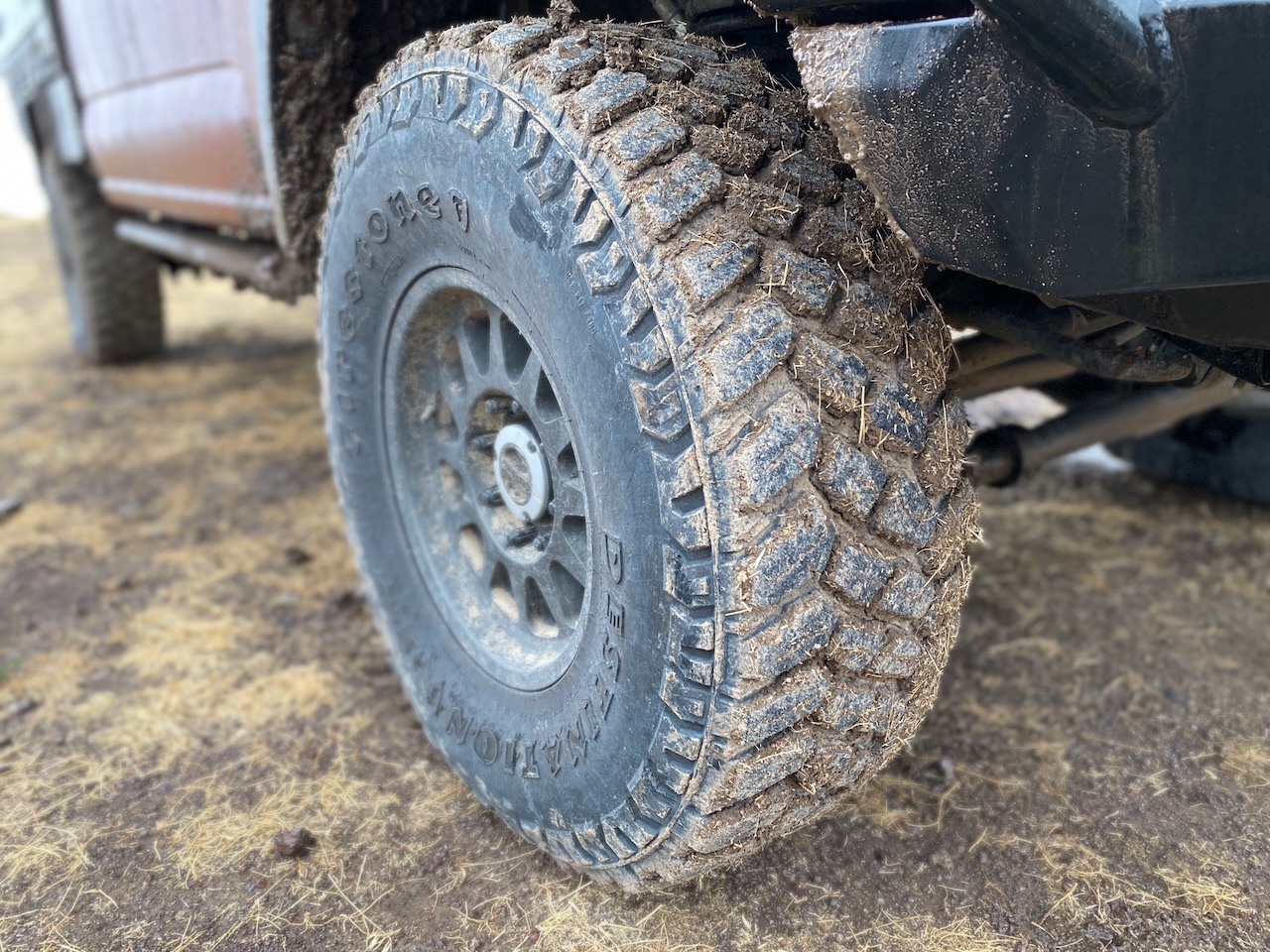Full Disclosure: Firestone Tires invited Expedition Portal and several other content creators to explore Oregon’s Owyhee Valley for a week and to try out their new M/T2 mud-terrain tires. Firestone covered our travel expenses and food.
Nyssa, Oregon, is a tidy farming community of just 3,000 souls hard up against the Idaho border on the banks of the Snake River. It’s one of those rural towns where the high school and middle school share a football field, the Chevron station is the local gathering place, and the homecoming parade is only two marching bands and a dozen floats long. A tiny mercantile on the main street stocks specialties from Mexico and Central America for laborers far from home. The striking art deco train depot graces a terminal where, during the October harvest, the region’s trade is loaded onto rail cars bound for greengrocers across the country. Onion skins flutter on the breeze downtown, and stray sugar beets escape from the relentless procession of double-trailer trucks to loll in the barrow pits. This country is redolent of sage from the wild lands beyond the farmer’s fields, where it mingles with allium aromas from the fall’s reaping.
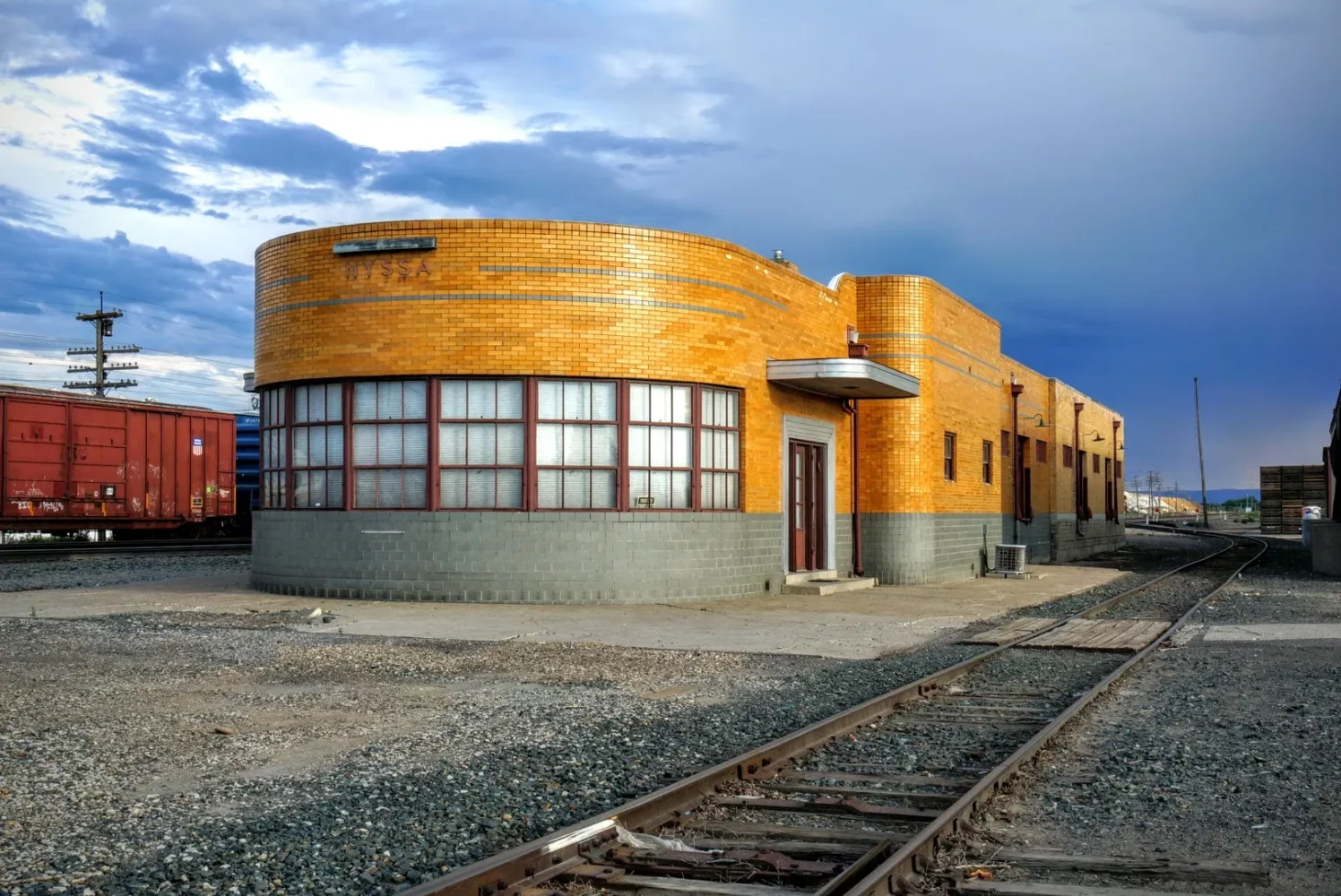
The art deco Nyssa train depot. (Image: docomomo-oregon.org)
After I scrubbed the reek of 91 octane and three days of grime from my hands at the Nyssa Chevron, the young clerk, sporting one of the most impressive neck tattoos I had ever seen, nodded to the half-dozen rigs clustered thirstily around the pumps. “Looks like you guys had some fun,” he said. Plastered across every surface of three Fords, two Toyotas, and one Jeep was a 3D layer of Owyhee cotton mud—a silty sludge that sticks to everything but itself—now petrified into a clearcoat-ravaging concrete veneer. Nyssa’s finest (only) coin-operated car wash was powerless against it, so we wore our new cloaks as a badge of honor. Indeed, we had some fun. Oregon’s Owyhee country sticks with you in more ways than one.
* * *
The email from Firestone’s Nick Jaynes dropped into my inbox just a couple of weeks before the scheduled start of a four-day expedition into the high deserts of Eastern Oregon. Was I free on short notice to join a handful of other 4×4 sickos for a season-ending autumn romp? We would travel light and fast with just six rigs and an open itinerary—letting the adventure come to us. I had been itching to return to this part of the Beaver State since my journey to the Alvord Desert in 2023, and Nick’s offer sounded ideal. Along for the ride would be Instagram and YouTube star Talon Sei, Overland Under Budget’s Micah Weber and his brother, the talented pro photographer Seth Weber, as well as Nick and Josh Ashcroft, both from Firestone. At a driver’s meeting over Zoom the week before departure, we each agreed to cook one night’s dinner for the group. Between the promises of tacos and pasta and Josh’s proposed route, our appetites were thoroughly whetted.
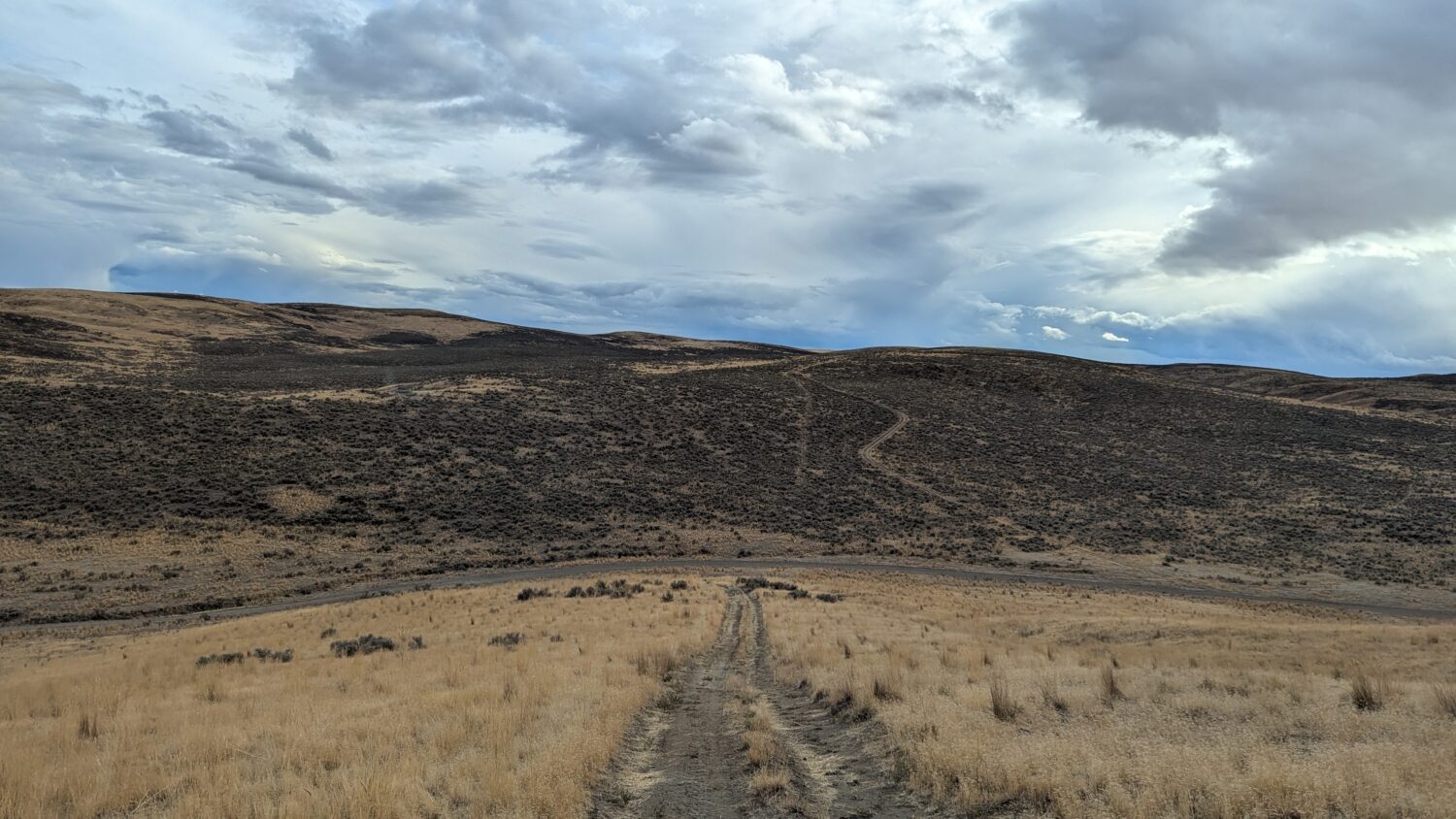
Typical Owyhee tracks. (Image: Joshua Ashcroft)
My ride would be a 2022 Ford Ranger XLT in FX4 off-road trim, with a handful of practical off-road performance upgrades, including the Ford Performance Pack tune, Old Man Emu BP51 suspension system, a ComeUp winch-equipped ARB bumper, ARB spots, and, of course, Firestone M/T2 mud-terrain rubber mounted on factory steelies. With a Leitner Designs bed rack and storage system, a Decked drawer, and a Roof Nest tent and awning, the khaki Ranger exuded a very African-safari vibe. True to under-budget form, Micah and Seth shared a ground tent and drove minimally modified pickups—a Ford Ranger Tremor and a Toyota Tacoma. Talon’s Tundra featured the most elaborate habitat among us: a cozy Kimbo camper that, from a distance, looked like a UFO floating across the prairie when underway. Nick’s monster Super Duty Ford, outfitted with a chassis-mount MITS Alloy canopy, was our anchor vehicle, and Josh’s GFC-equipped Jeep Gladiator ran point.
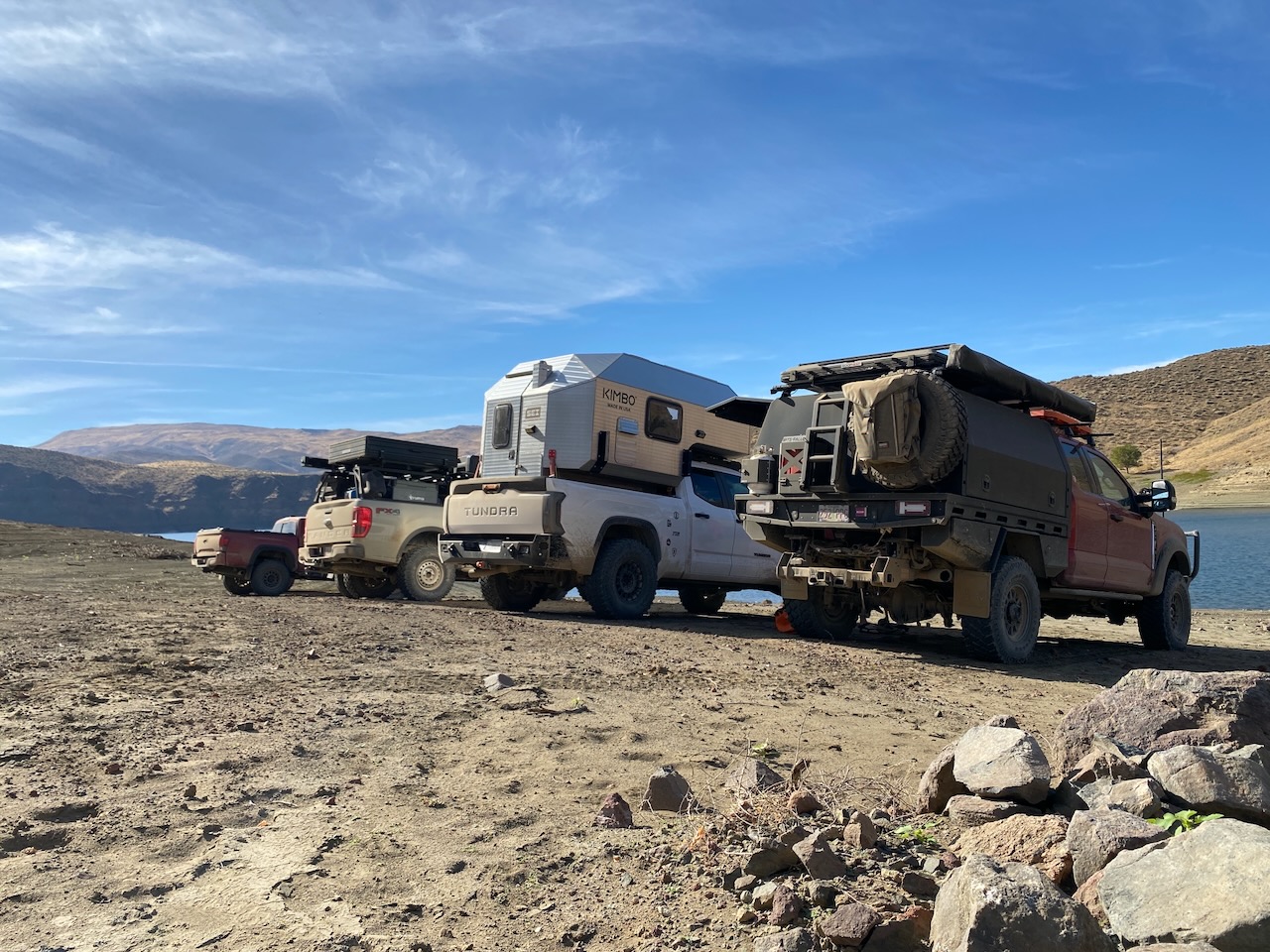
On the shores of Owyhee Lake. (Image: Stephan Edwards)
The Owyhee River is a major tributary of the Snake. Large sections of the river downstream from Owyhee Dam carry the Wild and Scenic designation, and bighorn sheep, bobcats, mule deer, and mountain lions thrive in the spectacular canyons carved by the river, some as deep as 1,000 feet. The Owyhee irrigates the onion and potato fields of Malheur County, and the dam backs up the waters to form the sinuous 52-mile stretch of Lake Owyhee. A New Deal WPA project from the 1930s, the reservoir is Oregon’s longest, and it is surrounded by seemingly endless tracts of public lands managed by the BLM. Hundreds of miles of diverse roadways that beg for exploration radiate across the sage prairies and volcanic escarpments.
* * *
Travelers from far away have long sought out the wilder reaches of this desert, the traditional homelands of the Shoshone and Bannock peoples. In fact, Owyhee simply means Hawai’i—an English language corruption of the indigenous name for those tropical islands. Three Native Hawaiian trappers, the first outsiders to attempt to chart the Owyhee, disappeared up the river in 1819, never to be seen again, and their faraway Pacific home lent its name to the river and the region. We arrived from all points, including Oregon, Montana, and Colorado, and in the wee hours of the first day, Micah and Seth rolled into camp all the way from Southern California.
- Stunning campsites are the norm in the Owyhee.
- (Images: Stephan Edwards)
Our first hours on the road started in a cloud of dust, evidence of the year’s drought conditions throughout much of the Great Basin. The clay and volcanic soils combined to create a particularly fine yet highly abrasive powder that made its way into everything. It forced our convoy to spread out to salvage any visibility and bumped up the chatter on our Midland radios. But the main arteries are well-maintained with minimal washboard; they flow over and around the undulating landscape and encourage spirited driving, which my Ranger tackled with Raptor-like aplomb, the OME shocks gamely soaking up the dips and crests.
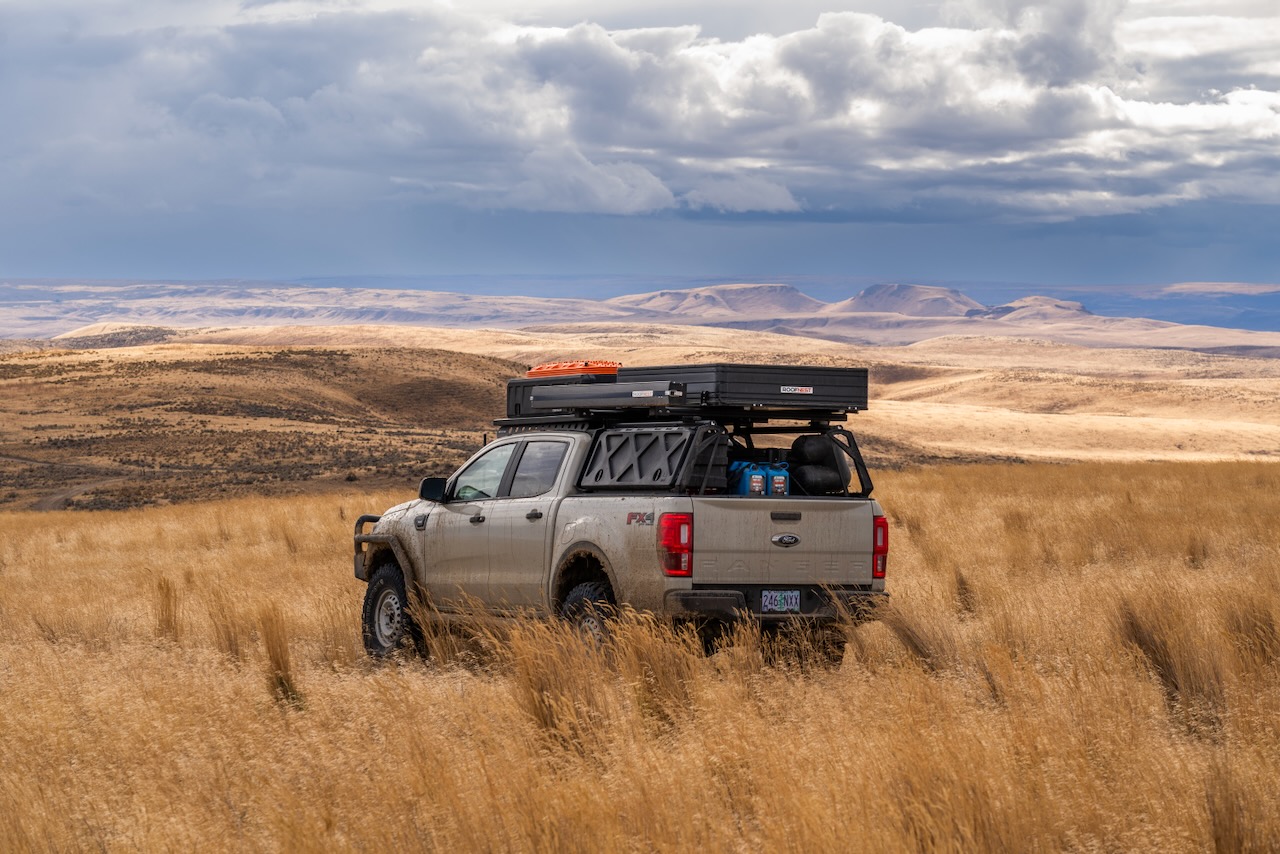
The Ford Ranger under threatening skies in the Owyhee. (Image: Nick Jaynes)
But technical 4×4 trails abound in the Owyhee as well. Sharp anticlines and heavily eroded hillsides define this terrain, and dramatic elevation swings of thousands of feet are common. Many overgrown two-tracks cling precipitously to the crags, and steep climbs in low range brought us to high overlooks where the views stretched seemingly clear to Nevada. We descended to the lake, where Nick’s four-legged friend Arlo chased ball after ball, leaping joyfully into the grainy waters. Much like our first campsite, the second found us posted under towering, crumbling basalt cliffs lit up by an October Super Moon as we munched on Micah’s tacos. But change was in the air—shoulder season conditions in the high desert can be unpredictable.
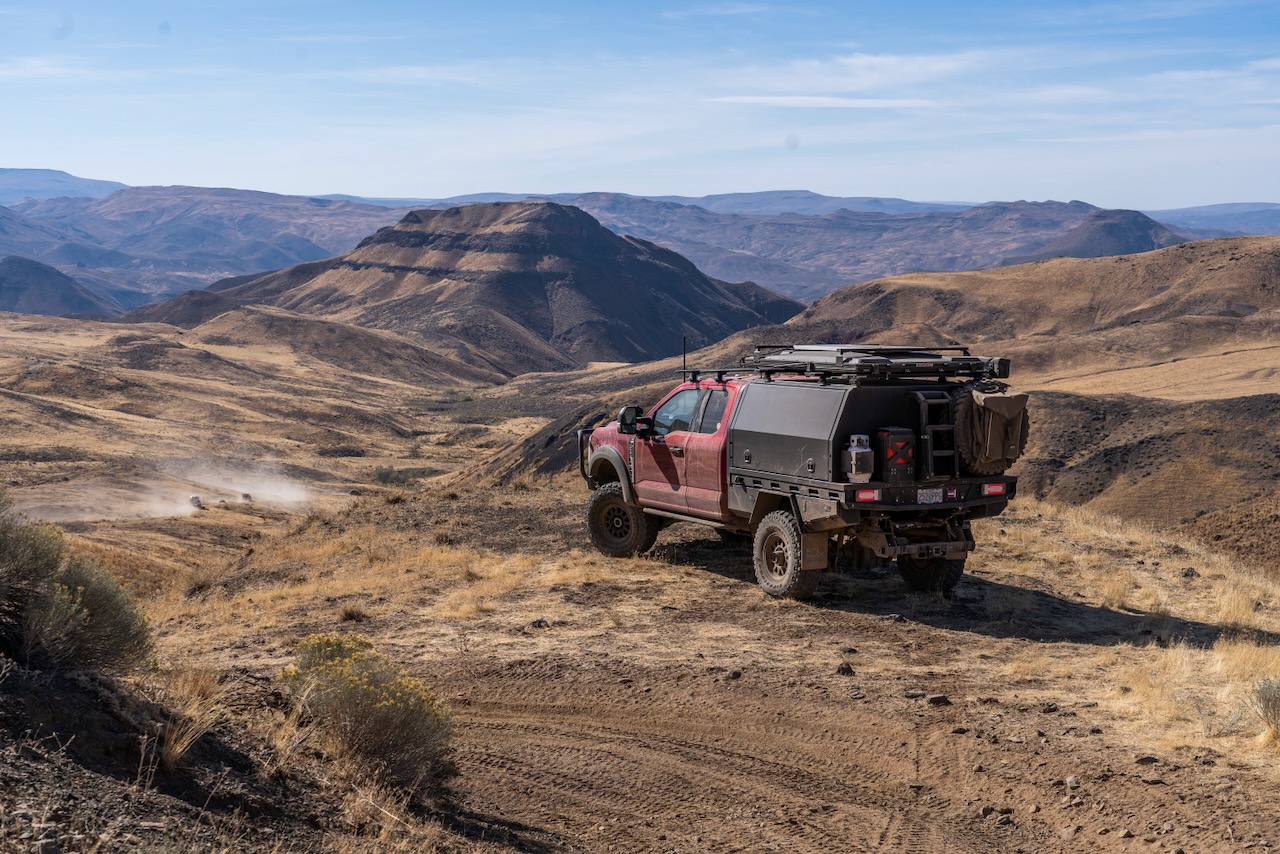
Nick Jaynes’ impressive Super Duty Ford. (Image: Nick Jaynes)
* * *
None of the dozen or so four-wheel drives I have owned over the years have ever been equipped with mud-terrain tires. I have always been an all-terrain kind of guy, preferring their versatility, cold-weather performance, lighter weight, and better highway manners. The fact that I have mostly lived and traveled in dryer climates, like Wyoming, the American Southwest, and Southern Africa, has historically put more points in the all-terrain column. My own Land Rover Defender currently wears a set of Firestone X/T hybrid tires, which have proven to be incredibly capable in a wide variety of conditions (look for a long-term review of these tires in the near future). Eastern Oregon would, at first glance, seem to be ideal all-terrain country, but a big shift in the weather brought my Ranger’s M/T2 mud-terrains front and center on this Owyhee adventure.
- Getting really muddy in Eastern Oregon.
- (Images: Stephan Edwards)
The following morning greeted us with a blood-red sunrise framed across low clouds, and a biting southwest wind portended wetter things to come. By lunchtime, temperatures had plummeted, and it was raining—hard. All those dust clouds from the previous day turned to clods of sucking, slippery mud. The steeper tracks flooded with runoff, creating treacherous traction conditions, especially for the larger trucks, Nick’s Super Duty and Talon’s tippy Tundra. These are the contexts where mud-terrain tires shine, and I was grateful for the extra grip in the deep clay gumbo and on the slicked stones. Among all the rigs, only Micah’s Ranger wore all-terrain tires (the Firestone X/T), which performed above and beyond expectations in the rain, even during some experimental driving in 2WD.
You can see in the images below how mud-terrain tires (on the left) increase their adhesion in wet conditions with their large, widely spaced tread blocks that evacuate mud quickly, exposing more tire tread. The all-terrains (on the right) gum up more and have a harder time shaking off the sludge.
- Firestone M/T2 mud-terrain tire.
- Firestone X/T all-terrain tire. (Images: Stephan Edwards)
It showered all afternoon as we explored the southern shores of Owyhee Lake, and we enjoyed a long water crossing that temporarily cleansed some of the topography from our undercarriages. Washed-out roads and barely-there side tracks kept our attention sharp behind the wheel, and as temps continued to drop, we made camp that evening in a remote, wide, and barren basin. By 9:00 p.m., those southwesterlies had blown the first wave of the storm out, and the Super Moon returned to shine on our circled wagons not far from where the Oregon Trail itself once traversed this corner of the Pacific Northwest.
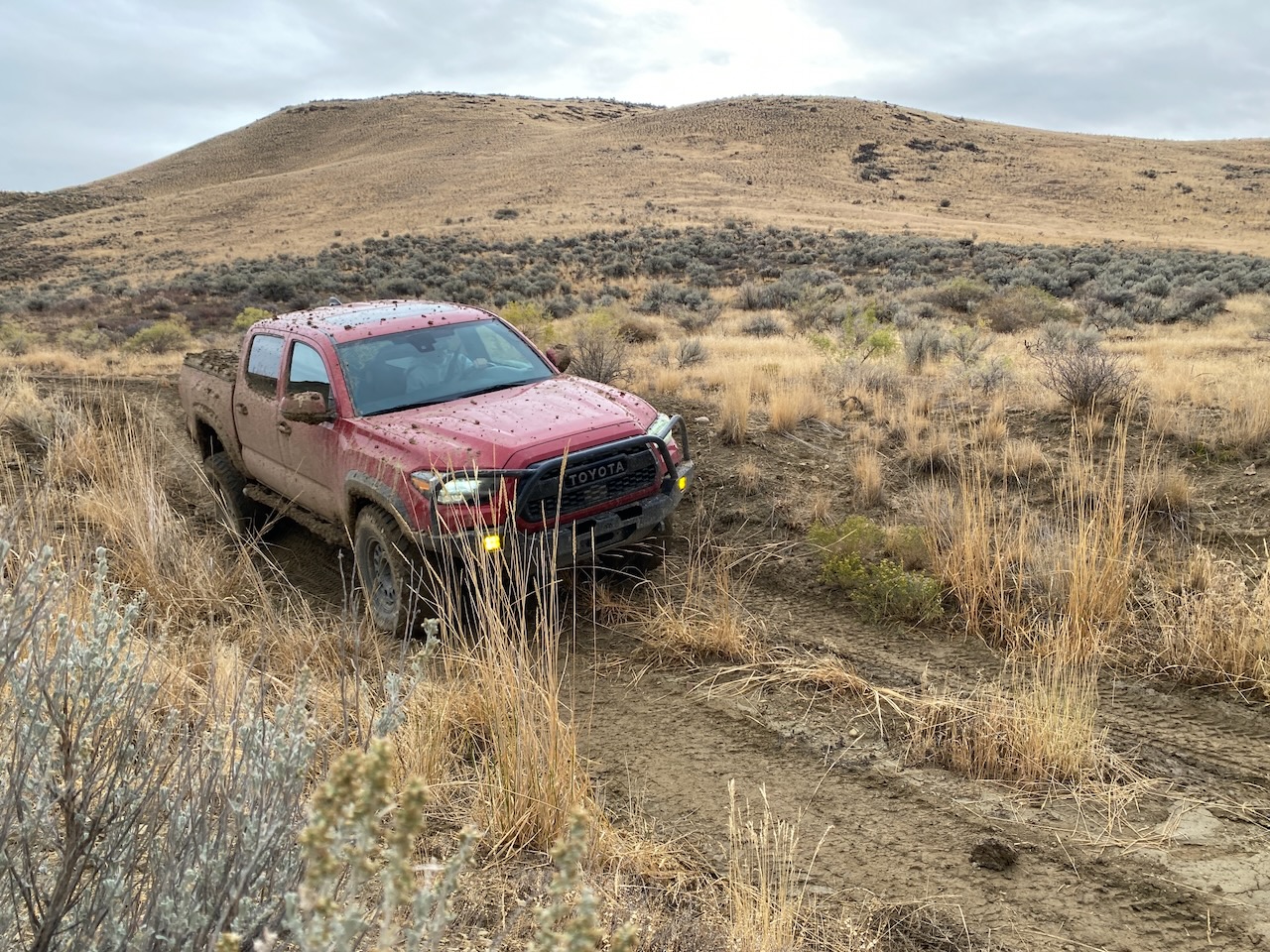
Seth Weber’s Tacoma drops in. (Image: Stephan Edwards)
* * *
The penultimate day was a fascinating one—a brief visit to a natural hot springs, another fun water crossing, and a quick run on the tarmac to Nyssa for fuel, where we struggled with the hopeless car wash and were hemmed in by the hasty homecoming parade. Our final destination was an area where the BLM travel plan included an OHV zone. Off-highway designations are usually reserved for terrains like dunes or dry lake beds (such as on the Alvord Playa), but this OHV sector was an environment not unlike the others we had been traveling in the last few days. A quick call to the local BLM office confirmed that we were free to roam in this area wherever we wished across broad, undulating hills carpeted with prairie grasses, rabbit brush, and sage and where herds of cattle ambled through the arroyos.
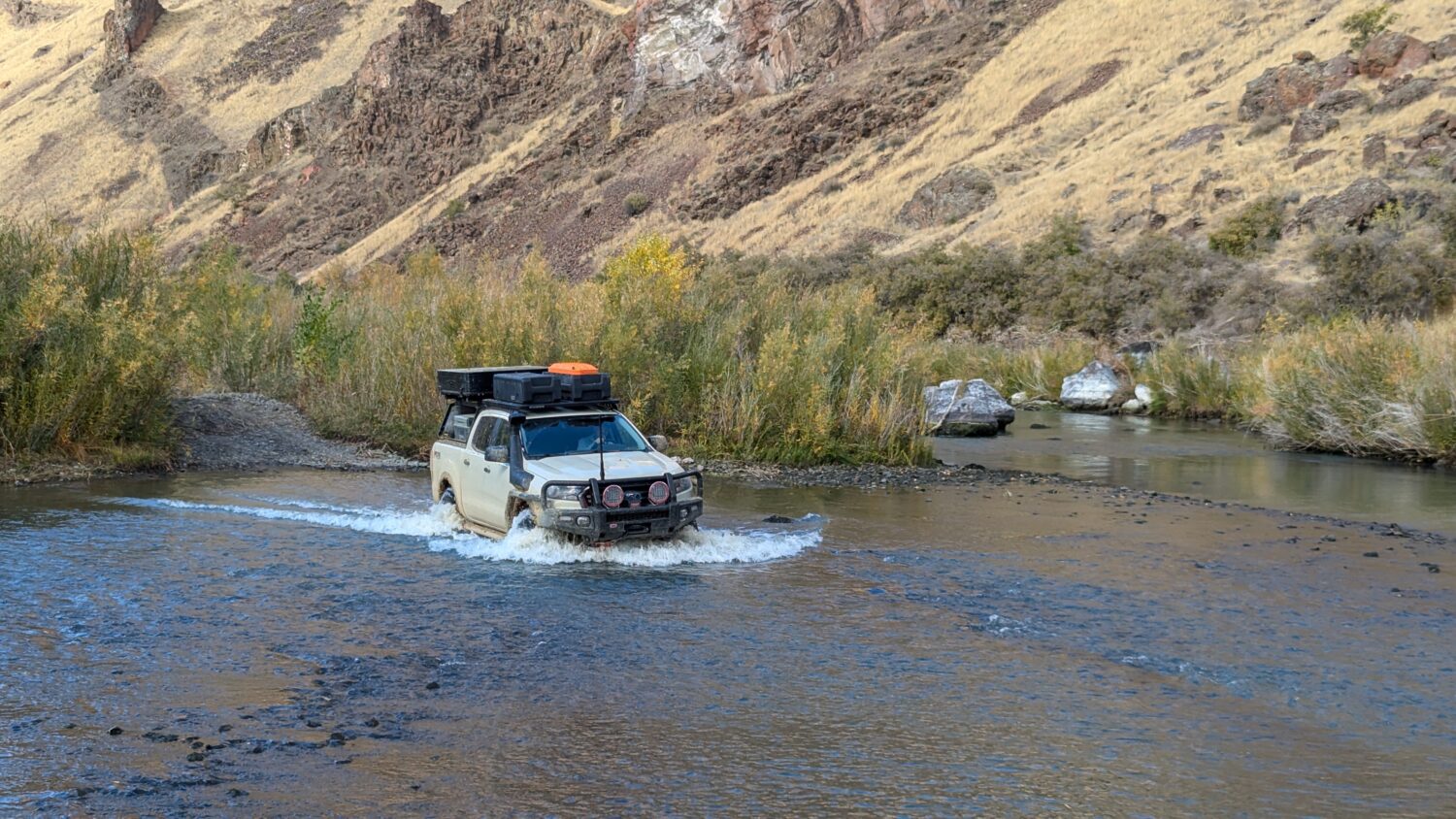
One of two river crossings on this adventure. (Image: Joshua Ashcroft)
We turned off the road and drove across country, straight to the top of a promontory where a decommissioned water tank loomed over the landscape and took in yet another breathtaking vista, but we felt uneasy. Despite the official designation and the fact that local ranchers had surely been piloting their pickups and ATVs off-road over these hills for decades, somehow riding roughshod over the sage seemed wrong. Were we trampling birds’ nests or native flora? Contributing to erosion? Risking a wildfire with our hot catalytic converters collecting the tall grass? Spooking ground squirrels or coyotes? After a very brief foray off-piste, we quickly returned to designated routes to find our last campsite. We huddled around a large pit fire as the nighttime temperatures fell into the 30s fahrenheit and then the 20s, in sharp contrast to the highs in the 80s that we enjoyed on the first afternoon of the trip. Winter was on its way in, and we were on our way out.

Owyhee panoramas. (Image: Stephan Edwards)
* * *
The Owyhee country sticks with you. It’s not just in your memory—the images of the endless panorama of rolling sage hills, dramatic volcanic geology, impossibly dark night skies, the overwhelming silence of the early mornings, and the challenges behind the wheel. It’s literally the landscape itself, mud-caked under your rig, the dust on the dash, the fragrance of wood smoke, onion, and sage in your nose. We only saw a sliver of the Owyhee, and I, for one, can’t wait to return.
For videos from this Oregon adventure, check out Talon Sei’s YouTube channel.
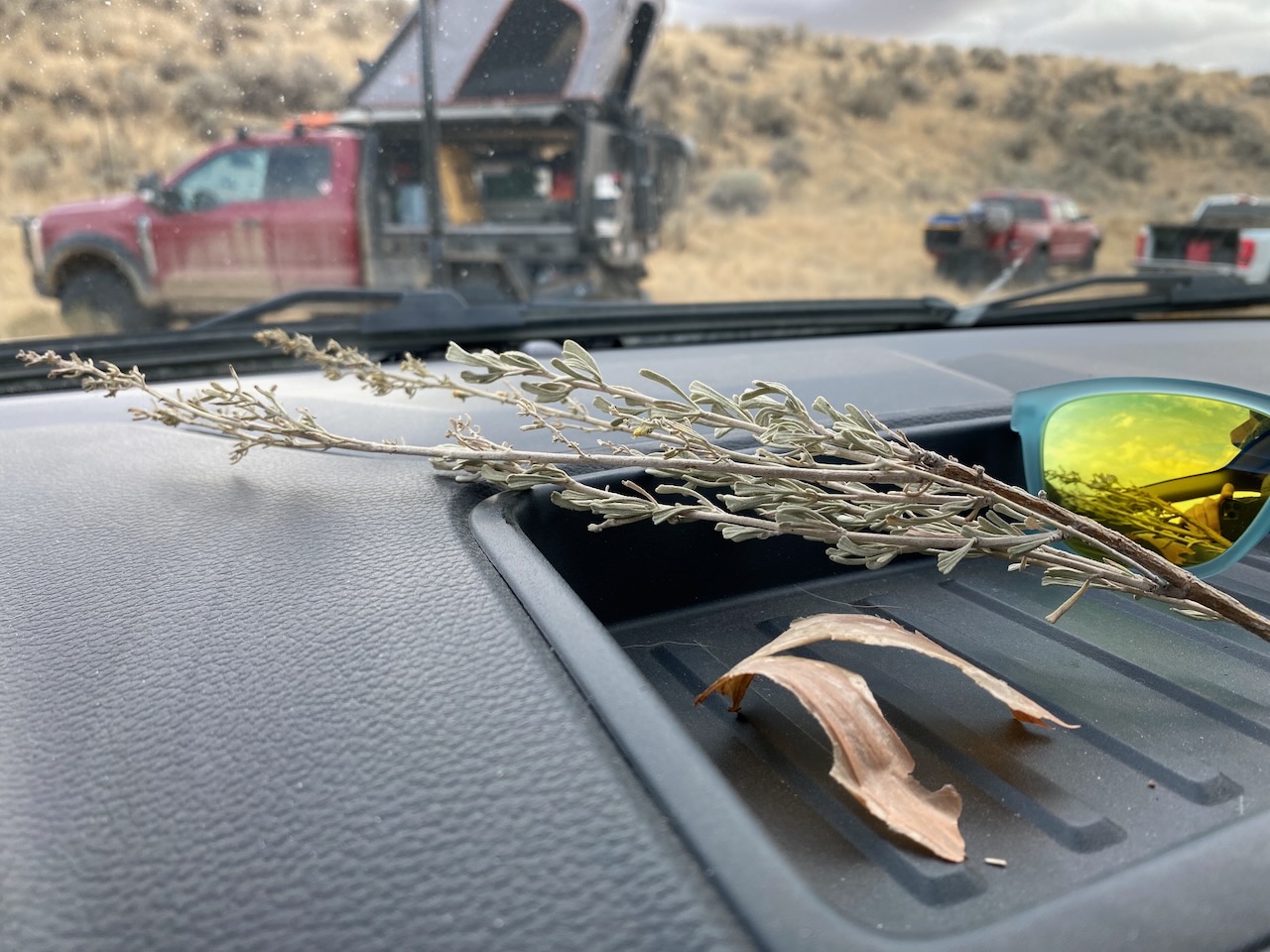
Onions and sage. (Image: Stephan Edwards)
Images: docomomo-oregon.us, Nick Jaynes, Joshua Ashcroft, Stephan Edwards
Read more: Oregon’s Alvord Desert | Overland Routes
Our No Compromise Clause: We do not accept advertorial content or allow advertising to influence our coverage, and our contributors are guaranteed editorial independence. Overland International may earn a small commission from affiliate links included in this article. We appreciate your support.


